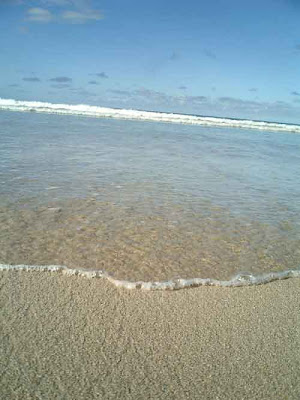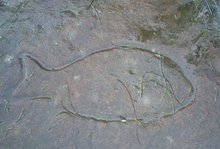 WOOHOO! - It's Halloween again. Let's see what spine-chilling, scary and weird spook lurks in the closet this season.
WOOHOO! - It's Halloween again. Let's see what spine-chilling, scary and weird spook lurks in the closet this season.
It has been found that educated and mature parents, capable of long-term thinking/planning produce healthier and smarter kids "Children with highly educated parents, and from families with two working parents, display higher cognitive ability and appear to have fewer behaviour problems." Depressed and immature parents are probably not ideal carers.
The 'One minute a day-dad' is probably steering his attention towards electronic interactivity, just as the mother/carers are not investing in interaction with the child.
Not learning to focus in a social setting could lead to 'Attention-Deficit Hyperactivity Disorder' (ADHD). “Drugging unruly children is a method of social control “ in Australia and the U.S. especially. Being under six years old for 'the pharmacological solution' seems no barrier. Later, cognition can be chemically enhanced and psychotropic medication usage becomes prevalent for young adults.
“ Drinking as a means of self-medication” is usually adopted in the parental milieu and might be advanced into "binge drinking" or a “Culture of Extreme Drinking” and self-abuse.
The 'home' environment is a dangerous place: No, not spooky bats, but family dogs maul helpless children to death (here, here, here & etc) or transfer their diseases (image). Nothing is done.  Alone in deep water (pools) is also a high risk environment(2 yo, 15 mo, 2 yo). Just mower injuries are considerable.The media is awash daily of violent crimes committed by the 'hand of the carer' against helpless infants, toddlers and children. In 2003 "almost 3,500 children under the age of 15 die from maltreatment (physical abuse and neglect) every year in the industrialized world." (UNICEF 2003, pdf) Nothing much seems to change.
Alone in deep water (pools) is also a high risk environment(2 yo, 15 mo, 2 yo). Just mower injuries are considerable.The media is awash daily of violent crimes committed by the 'hand of the carer' against helpless infants, toddlers and children. In 2003 "almost 3,500 children under the age of 15 die from maltreatment (physical abuse and neglect) every year in the industrialized world." (UNICEF 2003, pdf) Nothing much seems to change.
Scaffolding society does not seem to lend much support either, in fact the human balance sheet is sliding into that of a 'developing' country: Australia "continues to accept mediocrity for our young people" at a time when we top the rankings of some global prosperity indices....I'm disappointed in the way Australia has become smug about being top of the pops in wealth and sport, but for the most important element for the future of the country, our children, we're way behind the eight ball," says Professor Stanley.
- Dying very early: "Australia ranks 20th out of 27 nations for infant mortality.""The infant mortality rate for Indigenous Australians is more than double the non-Indigenous rate - we rank in the bottom third of the OECD nations for infant mortality."
- Violence: "There are too many "deaths from injuries and non-accidental deaths...These are children who are killed - neglected so much that they die."
- Children getting children: "Teenage pregnancy rates are much higher than the OECD average, and rates for Indigenous young Australians are the highest in the OECD"
- Lack of sustainable public mobility: Youth road deaths are 12 times higher than Portugal. Chuck mum's SUV. "We need to get kids walking to school, so they can get both exercise and get to know other children.”
- Choking on Pollution: "Australia's asthma mortality rates are one of the highest in the world" pdf
- Mental health: - Australia ranks "13th out of 23 OECD countries on childhood mental health".
- Food/Socialising: Australia ranks "21st out of 27 for children eating meals with their parents."
- Communicating: "We have half the rate of parents just hanging out and just talking to their children than Hungary does for example - Hungary is the best in the OECD," Professor Stanley
A crowded, hot, water-less and polluted world, without all the other species will be very unhealthy.
The environmental heritage left behind is far from inter generational equity according to this report:
All will have to deal with bio-accumulation:
- Groundwater and surface water contamination,
- PCBs, Radioactive waste and uranium mining, mining activities generally
- new emergent chemicals/toxins
- Urban air quality
- Untreated sewage
 In Manly businesses are eager that all immerse themselves in plastic gadgets and costumes, which will soon end up in the tip, or worse the ocean. Trick or treat for advanced children ends up nasty and violent and only keeps the authorities busy.
In Manly businesses are eager that all immerse themselves in plastic gadgets and costumes, which will soon end up in the tip, or worse the ocean. Trick or treat for advanced children ends up nasty and violent and only keeps the authorities busy.The best green 'party' (celebration) people could offer the little ones would be to face up to their actions, access their values and act responsibly towards themselves, their offspring, the other species and the remaining biomes and give the Earth a chance. Quality interaction and doing things from scraps can be a lot of fun .
See also: "Manly- It's kinda spooky 2007"
Images: All public art works by young people o.s. Known here as 'graffiti', as it often just is the initials of the scribbler in Manly.
Links
- The Australian Research Alliance for Children and Youth -ARACY Report Card on the Wellbeing of Young Australians,
- Never better - or getting worse?The health and well being of young Australians, Australia 21, Richard Eckersley, pdf, 369KB
- John Pilger, Under cover of racist myth, a new land grab in Australia, Claims of child abuse are proving a fertile pretext to menace the Aboriginal communities lying in the way of uranium mining. The Guardian, 241008
- A conversation with Professor Fiona Stanley, (Professor in the school of paediatrics and child health at the University of Western Australia, and UNICEF’s Australian Ambassador for Early Childhood Development. NHMRC, 0708, podcast
- Garnaut, Climate Change Review
- Intergenerational Justice, 2008, Stanford, Philosophy
- Top ten World's worst pollution problems 2008, Green Cross & Blacksmith Institute
- Australia’s health 2008, Australian Institute of Health and Welfare, Canberra, pdf
- Costume suggestion for 2008 : Plastic choked mermaid at Manly Beach

































